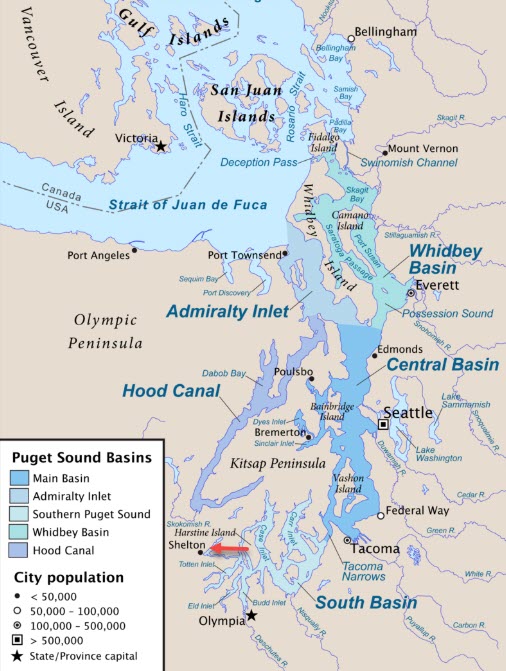
Eleven years after Coastal Raptors volunteers and I applied visual ID band P/O to a Bald Eagle, it was found dead below a line of homes at the water’s edge in South Puget Sound on March 22, 2025 (red arrow on map above shows the general location..)
Homeowner JC found the eagle on the bulkhead rocks at their beach access. Apparently the eagle was brought to shore on the high tide, remaining there as tide waters receeded. (Note: JC’s full name and the names of nearby neighbors included in my blog are not provided in order to protect their privacy.)
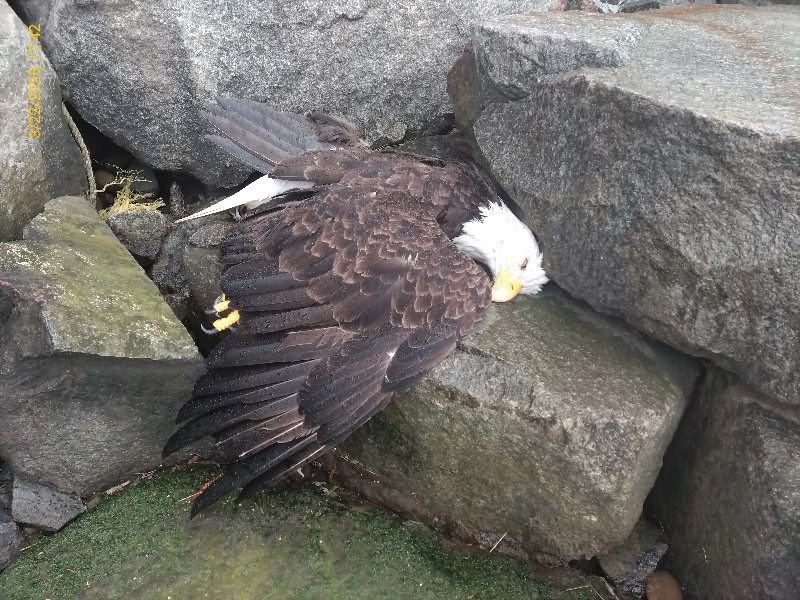
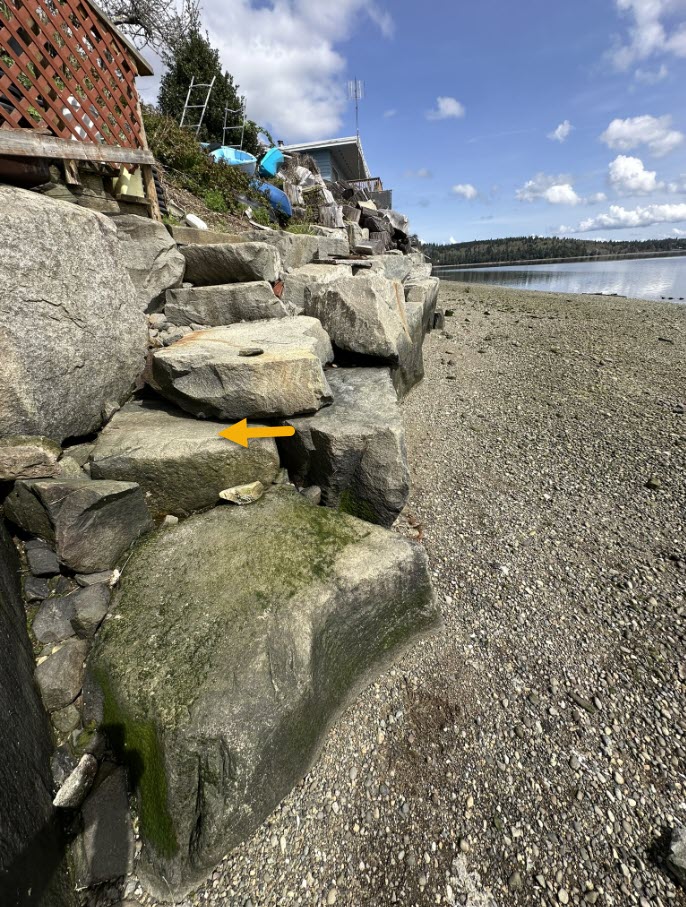
An employee with the Squaxin Island Tribe picked up and transported the remains to the Billy Frank Jr. Nisqually National Wildlife Refuge near Olympia. Nisqually’s Tim Marchman reported the find online to the federal Bird Banding Lab, which maintains records of all birds banded in North America. Soon thereafter Tim received an email from the Lab identifying me as bander along with the relevant information shown below.
Species: Bald Eagle; Date banded: March 8, 2014; Banding Location: Near Ocean Shores, Washington; Age: Hatched in 2013; Sex: Male
Refuge biologist Kurt Roblek forwarded the report to me and provided contact information for people in the neighborhood who could tell me more. I very often follow up after I receive a Bird Banding Lab report on one of my banded birds, especially when found dead. Sometimes the cause of death is provided in the report. This was not the case with P/O.
Checking with the Neighbors
It’s not unusual for Bald Eagles to live long lives. To date, we’ve banded 38 Bald Eagles with ages of our oldest five in the study ranging from 10 to 15+ years old. (Bird Banding Lab Records show the longest-lived wild Bald Eagle reached age 38.) I was interested in knowing why P/O died at age 11.
I’ve been piecing this puzzle together through phone calls and texts to the homeowner who found the eagle and to her neighbors; I also made a visit to the location where P/O was found dead. During more than a week leading up to P/O’s discovery, a Bald Eagle had been observed in the neighborhood showing unusual behavior.
On March 13, nine days before P/O was found, neighbor Brad and his wife observed a Bald Eagle perched on their deck. It remained in that location for more than an hour before flying to a planter in a another neighbor’s yard.
On March 16, neighbor Vicki and family looked out the window to see a Bald Eagle walk through water at low tide to perch on a downed tree lodged there.
These encounters were made three days apart and less than 100 yards from where P/O was found. Neither neighbor could see whether the eagle was was banded.

On April 6 Coastal Raptors volunteer Dave Murnen sent me a link to a youtube video showing a banded Bald Eagle perched on a deck. As you’ll see in the video below, it’s not possible to read the alpha-numeric code on the band. That said, in all likelihood this was P/O.
“It’s 97% likely yours but there does appear to some possible green band usage on Bald Eagles in British Columbia, with some remote possibility it is from another bander,” wrote Bird Banding Lab biologist Matt Rogosky after I checked with him to learn of the likelihood that the deck-perching eagle was one of mine.
At this writing, there have been more than 94,000 views of and 3,000+ comments on this short video. I share three below.
“I see he is BANDED. He must have been hurt in the past and was rehabed, and wanted to rest for a bit and get some food?
WHAT A BEAUTIFUL BIRD. This is a 1 in a million opportunity!! Thanks for sharing it !!
He’s wet and tired. He’s resting.
Cause of Death
Perching on a deck in the rain with a barking dog and people talking on the other side of the window is not, by any stretch of imagination, normal Bald Eagle behavior. My first thought was this eagle, who probably was P/O, was likely suffering from highly pathogenic avian influenza (HPAI; bird flu). The HPAI H5N1 virus, a serious killer of wild and domestic animals, has been circulating in Washington and across North America since 2022.
Nisqually Refuge biologists transferred the carcass to the Washington Animal Disease Diagnostic Lab at Washington State University in Pullman, Washington for disease testing/necropsy. On April 21 refuge biologist Ryan Munes shared a report from the Pullman lab indicating that, according to a PCR test they had conducted, avian influenza was not the cause of death. In an email to me and others, Ryan wrote, “A necropsy and other tests will be performed to look for the cause of death. Stay tuned.”
On May 16 Ryan forwarded test results filed by the Analytical Sciences Laboratory at the University of Idaho indicating that P/O died from lead poisoning. Sadly, lead poisoning is a common cause of death among Bald Eagles and other raptors.
Quoting from the toxicology report: The lead concentration is excessive in both the liver (liver toxic range: > 5.00 ug/g) and kidney samples analyzed. The marked difference betweent these organs and with liver containing the higher concentration suggests a more recent exposure.
March 8, 2014 – Remembering Bald Eagle P/O
Bald Eagle P/O was trapped, banded and tissue-sampled for Coastal Raptors research monitoring the health of avian scavengers on the Washington coast.
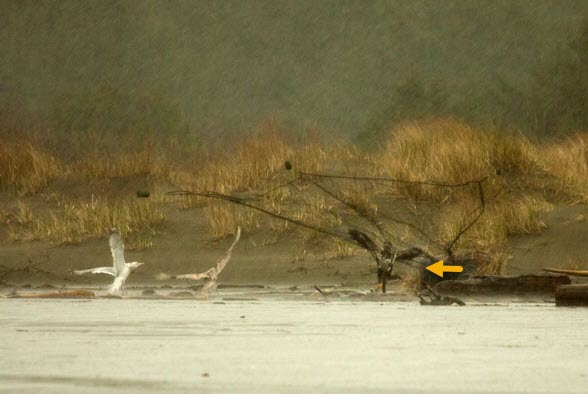
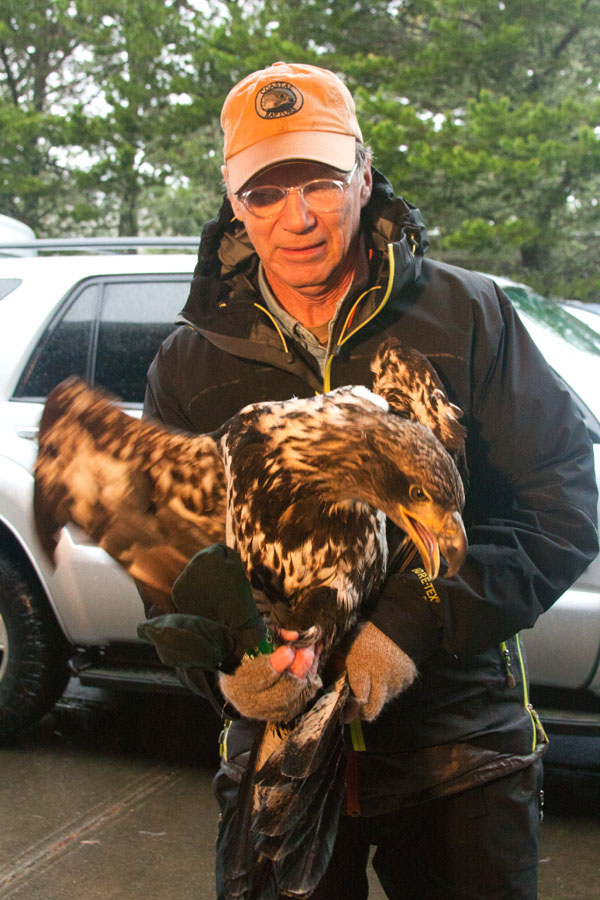
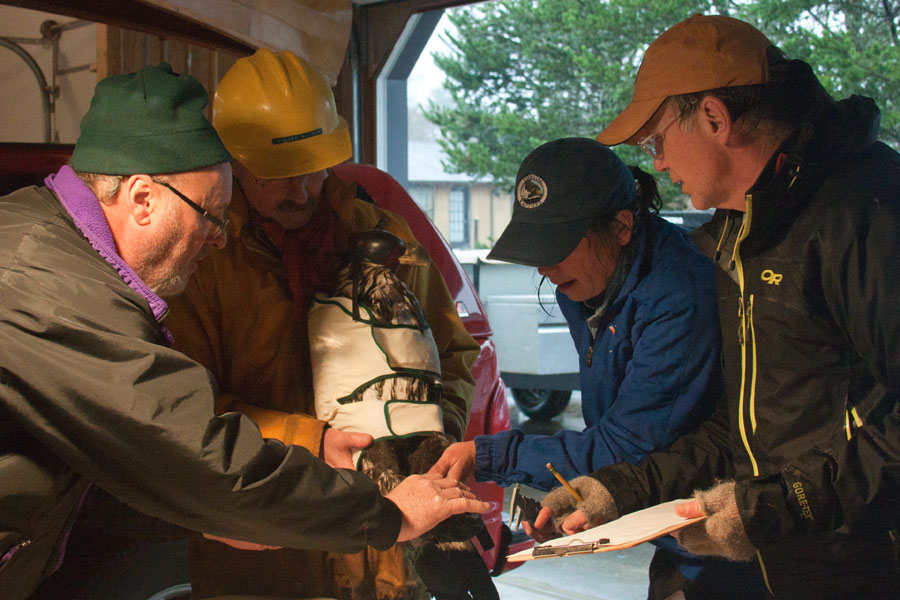

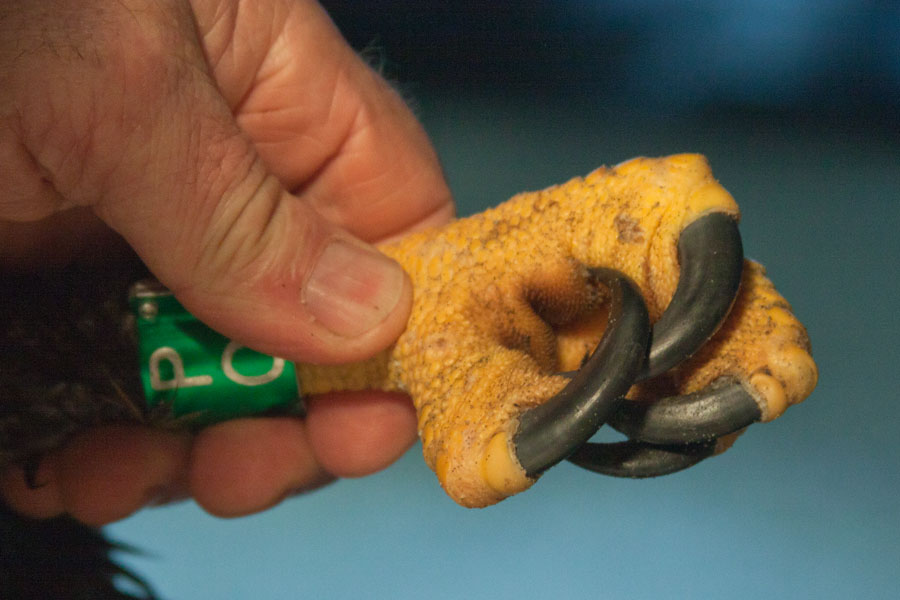
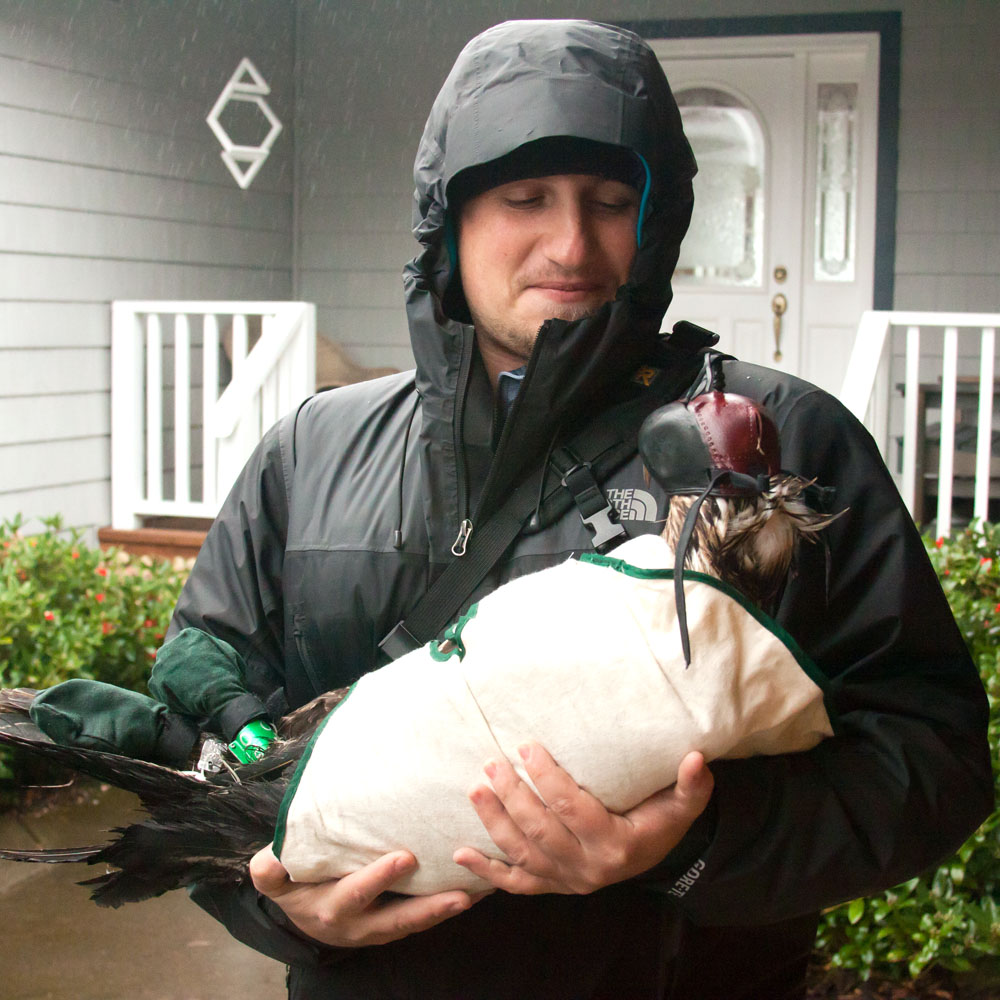
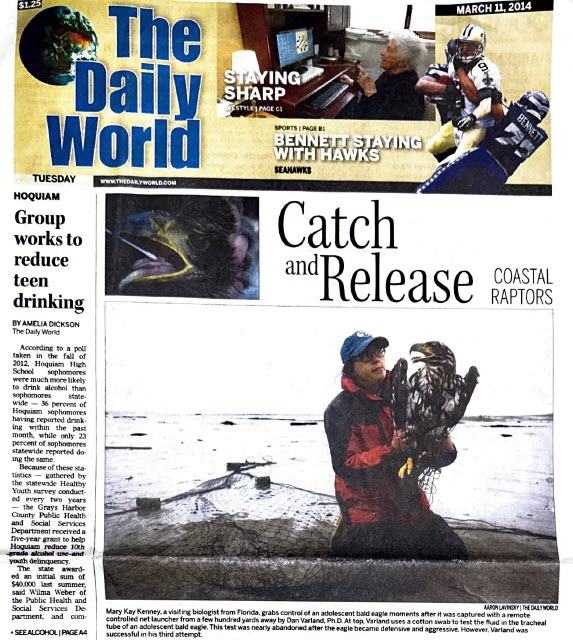
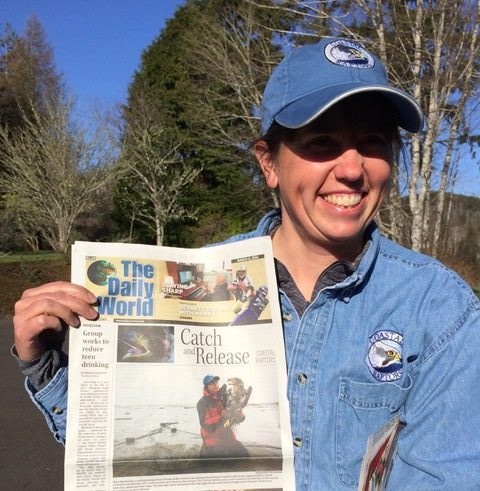
Bald Eagle P/O went 11 years and 14 days without a single resighting reported until, 54 miles from his banding location, his life came to an end.
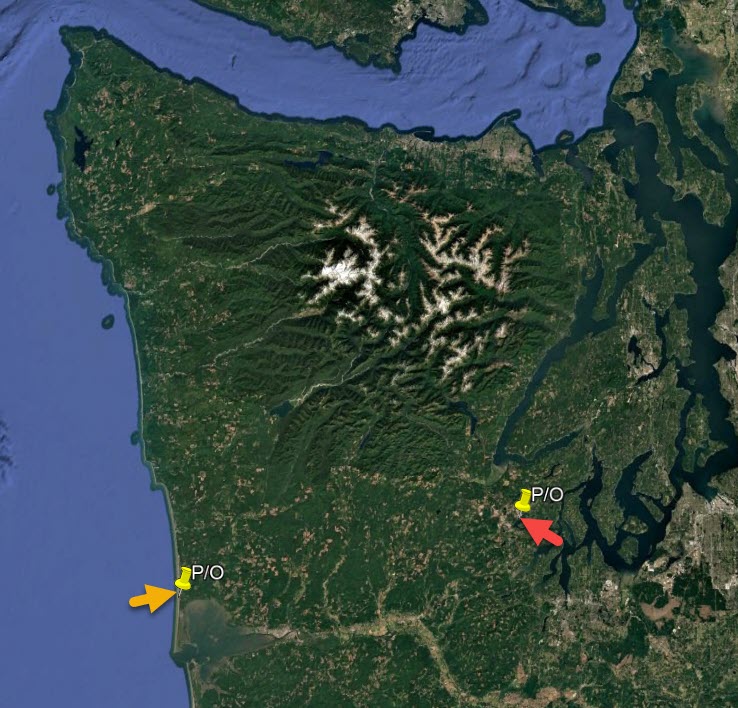
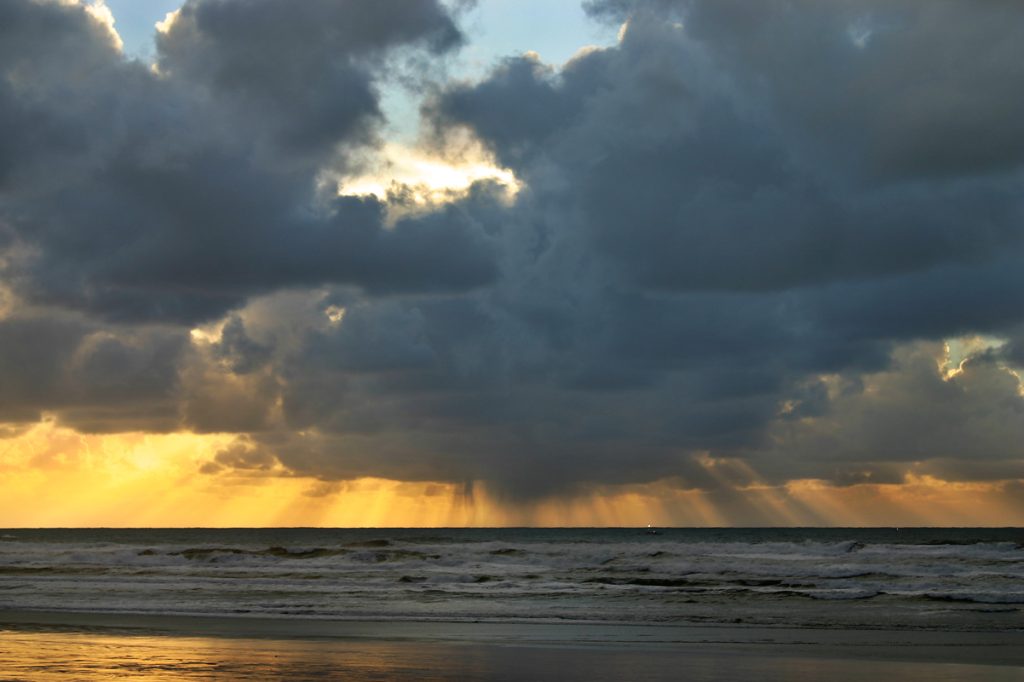
Note: If you would like to see more of my Blog posts on the Bald Eagle, click on “The Eagles” below.
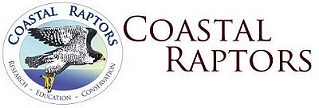
2 responses to “Coastal Raptors-Banded Bald Eagle Washes Ashore in Puget Sound”
PO we had BO is this the same bird??
No!